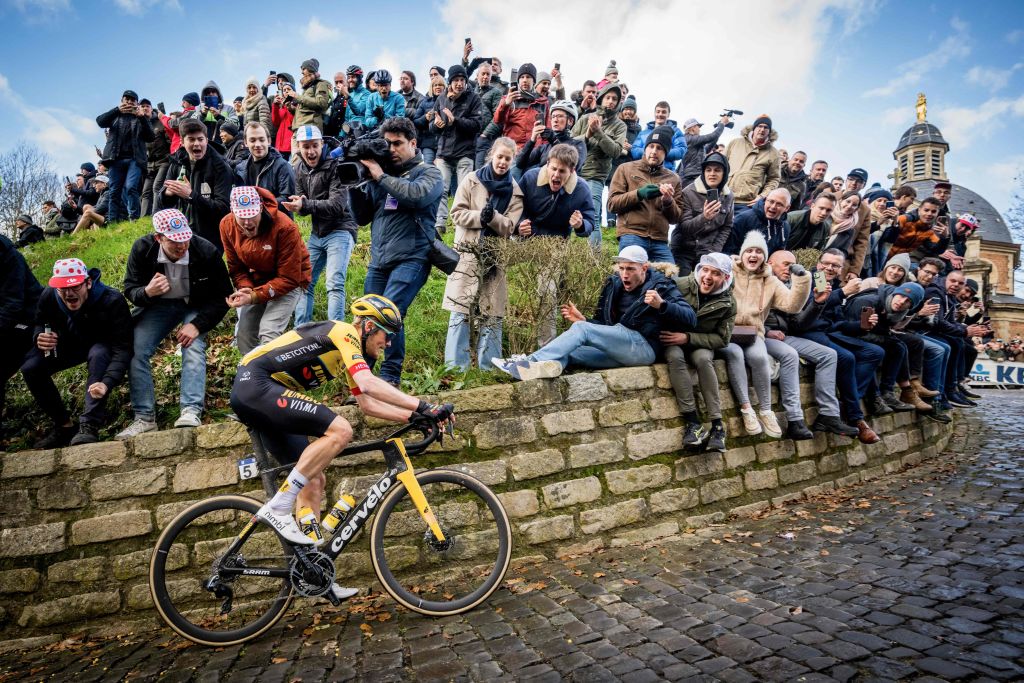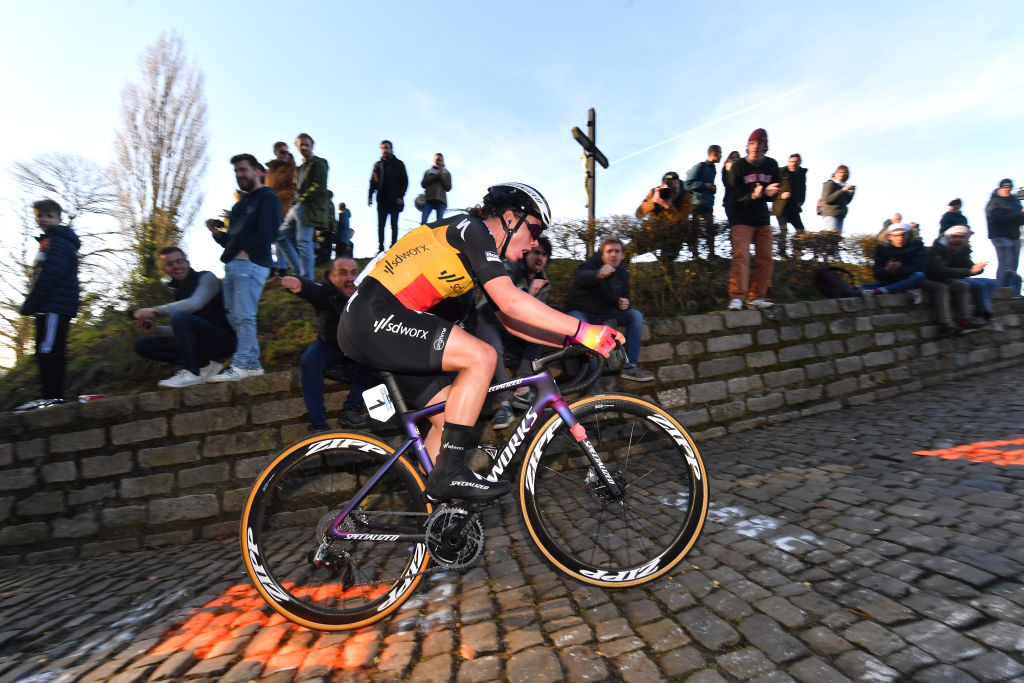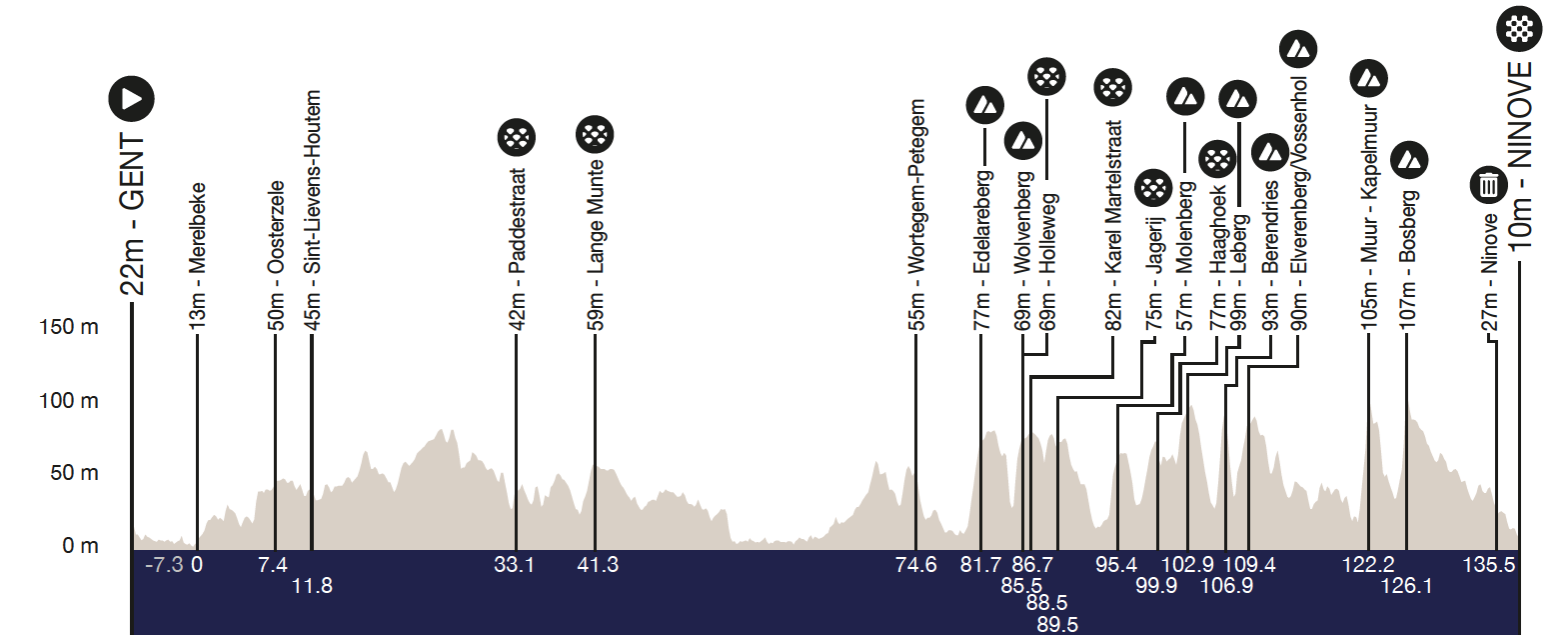What is the Muur van Geraardsbergen? Inside Omloop Het Nieuwsblad's toughest climb
Once a crucial part of the Tour of Flanders, now the cobbled berg holds sway as a key Opening Weekend launch point

The cobbled climb of the Muur van Geraardsbergen, also known as the Kapelmuur, was once seen as such an integral part of the Tour of Flanders finale that when it was axed when the finish was shifted in 2012 fans and riders alike mourned its removal – some carrying fake coffins up the climb in protest while one commentator decreed that the race had been “decapitated”.
The Ronde van Vlaanderen, however, continued on without the Muur van Geraardsbergen as its penultimate climb, but it certainly has not been forgotten.
Not only has it returned to the race at times since, playing a pivotal role when it was first re-introduced in 2017 even though it was 95km from the end – with eventual winner Philippe Gilbert among an elite group that escaped on the climb. The Kapelmuur may have been completely missing from recent editions of the Ronde, but it has been regularly used elsewhere.
The revered climb which curves up the cobbles past a chapel perched atop the hill to reach a maximum altitude of 110 metres, has featured in races as varied as the Tour de France, Lotto Belgium Tour and even the self-supported Transcontinental but it is as part of the Omloop Het Nieuwsblad finale that it has truly found it's new home.
The steep, punishing and always spectator-packed climb which delivered memorable late race battles at the Tour of Flanders since its introduction in 1970 – like Fabian Cancellara surging away from Tom Boonen in 2010 – had long been included at an earlier point in Omloop Het Nieuwsblad until 2018.
That year, however, the finish of the opening Classic moved from Ghent – first to Meerbeke and then next year the neighbouring Ninove – reviving the once much-loved finishing climb duo that was last used as the race finale of the Monument in 2011.
Once again, the Muur van Geraardsbergen slotted into its role as a crucial race-defining part of the finale. Just like it once was at the Tour of Flanders, it would deliver a tough penultimate climb, with the Bosberg to follow shortly thereafter, just at a different race this time instead.
Get The Leadout Newsletter
The latest race content, interviews, features, reviews and expert buying guides, direct to your inbox!

The Muur, or wall, is the penultimate climb at both the 197km men’s and 137.9km women’s Omloop Het Nieuwsblad, comes at 15.7km from the line and is followed soon after by the Bosberg at 11.8km to go.
The written race guide says the Muur of Geraardsbergen – or the Kapelmuur as the document refers to it – is officially 475m long with an average gradient of 9.3% and a maximum of 19.8%, though it’s perhaps a description that downplays the extent of the effort.
Most profiles, including the Strava segment and even the Flanders Classic video description of the climb, put the total distance of the ascent at over one kilometre – starting out in the town square and stiffening up in the final few hundred metres with the steep bend towards the church at the end.
“It’s an honest climb, where the strongest riders can make the difference,” says Sep Vanmarcke in the race guide. “Positioning at the foot is crucial. The second half of the Muur is the most demanding. Anyone who still has a little in reserve will usually launch an attack there. At the top, it is still about 15 kilometres to the finish in Ninove. So this is the perfect springboard to victory.”
The Belgian, who won the race in 2012, tried to execute on that by launching on the second half of the ascent in 2018, when it was first introduced as the penultimate climb in the race and while he wasn’t quite able to use it as a springboard to victory, he still came third.
At the Tour of Flanders, the climb has provided iconic moments in the race's history, from Eddy Merckx dropping breakmate Frans Verbeek to win his final title in 1975 to Peter Van Petegem's battle with Frank Vandenbroucke in 2003 and the famous Fabian Cancellara vs Tom Boonen duels.
In recent years at Omloop it has provided a successful final launching point for Annemiek van Vleuten in 2020 and Chantal van den Broek Blaak in 2019, who both used the Muur to launch toward a solo victory.
While in 2023, Dylan van Baarle (Jumbo-Visma) was the first man to utilise the tricky cobbled climb in his charge to victory. He finally dropped his last break companion Mathis Le Berre (Arkéa-Samsic) on the way up to the chapel on top of the hill, before holding off the charging peloton behind to claim victory by 20 seconds.
Last year's key split during the women's race came on the Muur, as Lotte Kopecky (SD Worx-Protime), Elisa Longo Borghini, Shirin van Anrooij (Lidl-Trek) and eventual winner - on her debut at the race - Marianne Vos (Visma-Lease a Bike) moved clear.


Subscribe to Cyclingnews for unlimited access to our 2025 Spring Classics coverage. Don't miss any of the breaking news, reports, and analysis from all the Cobbled Classics from Opening Weekend to Paris-Roubaix. Find out more

Simone is a degree-qualified journalist that has accumulated decades of wide-ranging experience while working across a variety of leading media organisations. She joined Cyclingnews as a Production Editor at the start of the 2021 season and has now moved into the role of Australia Editor. Previously she worked as a freelance writer, Australian Editor at Ella CyclingTips and as a correspondent for Reuters and Bloomberg. Cycling was initially purely a leisure pursuit for Simone, who started out as a business journalist, but in 2015 her career focus also shifted to the sport.
You must confirm your public display name before commenting
Please logout and then login again, you will then be prompted to enter your display name.